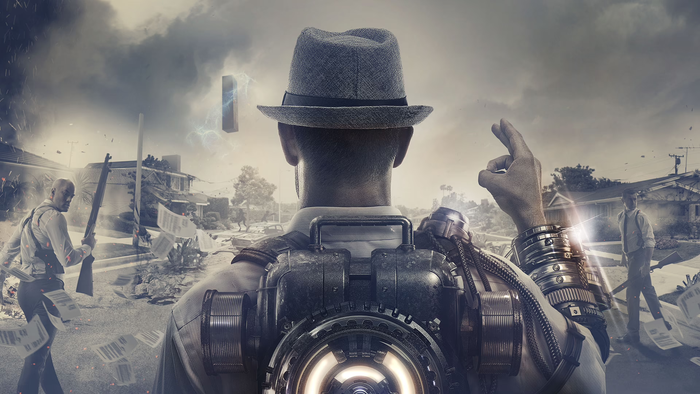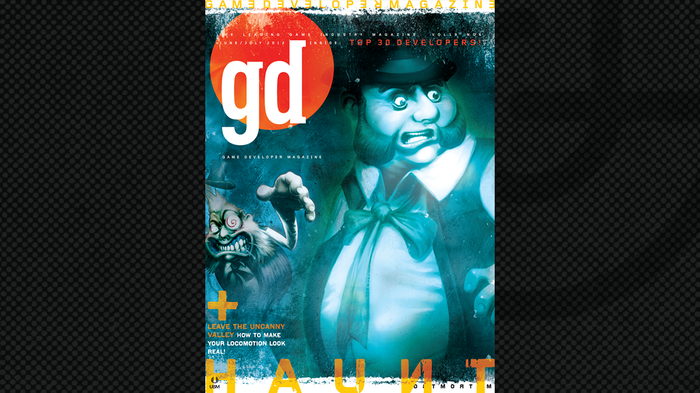Some Insights and Advice on How to Get into US Market from Marketing, Game Design and User Acquisition Perspectives
We had a special video interview with Pangea Mobile. The San Francisco-based company provides services that can help Chinese mobile games developers bring their titles to Western audience.


We had a special video interview with Pangea Mobile. The San Francisco-based company provides services that can help Chinese mobile games developers bring their titles to Western audience. The interview was divided into two parts. The first part is about Derrick Chen, CTO of Pangea Mobile, tells us what is Pangea Tools and how Chinese developers can benefit from these tools.
The second part is about four executives from Pangea Mobile giving Chinese developers some insights and advice on how to get into US market from marketing, game design and user acquisition perspectives.
Henry Huang, Marketing Director of Pangea Mobile, tells us an overview about Chinese and US market
Paul Pierre, CPO of Pangea Mobile, tells us the differences between Chinese games and US games in terms of game design, primary challenges for Chinese developers to get into the US market, and how to address them.
Steve, Growth Hacker of Pangea Mobile, gives us some insights about game marketing strategy in the US.
Son Nguyen, Senior Director of Product of Pangea Mobile, tells us how they do for Summoners Age in terms of app store optimization, design, UI/UX and art etc.
The following is the edited transcript of the interview.
Derrick Chen , CTO of Pangea Mobile

Gamegyro: Would you tell us about Pangea Tools?
Derrick Chen: Our Pangea platform is a unique, one-stop solution to help developers succeed in US. It combines pre-install analytics, post-install analytics and an array of tool sets, quite helpful, for non-western developers, to get into the western market.
Our pre-install analytics tool consists of Cross-promotions, UA attributions and UA management. The post-install analytics have all the KPIs that we care about such as Retentions, ARPDAU etc. We try to reduce the amount of noise that other analytic platforms has. But of course you can dig deeper if you want to, in our platform. Then we tie up all that up into our predictive analytic tool that measure the true ROI of your game by taking into considerations of your head account, your marketing and office expenses. Also we have other partners and services in the platform, such as User Acquisitions, Translation Services, User Services, Icon Testing, System and consultation. It is a full array of services that will help the western developers.
Gamegyro: How Chinese developers benefit from your tools?
Derrick Chen: first, the cross-promotion tool will help lower eCPI by leveraging existing users. The post-install analytic tools will help them gain more insights into their games and tell the developers what areas they need to improve on. Also our predictive analytics tool will give developer true ROI on the behalf of the game. Also the array of service that we provide, they don’t have to go anywhere else. Basically, they can come to us. We help the developer focus on what they can do best in making games and we handle the rest in one dashboard.
Henry Huang, Marketing Director of Pangea Mobile

Gamegyro: Please tell us about the US and Chinese market.
Henry Huang: Today in China, high volumes of Chinese games that flood app stores are big problems in Chinese mobile games space. This year we can predict over 500 to 600 mobiles coming out every month in China. The numbers are crazy; the market competition is very intensive. And obviously the developers’ revenue keeps decreasing. Comparing with the Chinese market, the US market looks more healthy and transparent. The game developers, they only need to focus on their own products. Also the US players are more mature, they are more willing to spend more money on games for fun. So we can see there is a trend to introduce high quality Chinese games from Chinese developers and publishers that seeking opportunities in US.
About culture difference, Chinese developers and publishers are facing big hurdles in reaching the audience, in terms of retention, monetization, UA, social media, mechanism and high quality localization. So Pangea offers a solution for Chinese developers to well understand US market and audience.
Paul Pierre, CPO of Pangea Mobile

Gamegyro: What is the difference between Chinese games and US games in terms of game design?
Paul Pierre: Sure. Specifically for Chinese VS US free to play game design. If boil it down, it really boils down to two things, it boils down to “power and time”. What I mean by “power and time” is when come to monetization and strong retention loops, a lot of what drives Chinese free to play gamers is power. So that means being able to straight up buy or have a chance to buy more powerful items, weapons, etc. And a lot of it revolves around vanity as well. Things that relate to “bragging rights” and having the people known that you have the most powerful item.
In the West, it’s a little bit more about time. So if you look at the top grossing game, like Candy Crush, Clash of Clans, we put a premium on our time that means we are more willing to pay for shortcuts, so we don’t have to wait for our Farmville crops to grow, or wait for our Clash of Clans troops to finish building. And you actually see that all across the top grossing games at least the mid-core free-to-play games.
Because of those two things, the concepts actually trickle down throughout the entire game design. Small things like leaderboards. In the US, we typically only have one server and leaderboards tend to refresh themselves over time. So that everyone has a shot at becoming No.1 and they get the leaderboard rewards. While Chinese games, you actually choose a server and leaderboards are permanent. It’s almost like a mark for the top players that stay forever in that server, and the developer just creates a new “server” instance.
In the west we are heavily influenced by Japanese games because in the West, we actually grew up with consoles. So we have had many generations of console games since 1980s. Japanese games had strong influence like Super Mario Brothers, to Chrono Trigger. And a lot of that has translated into mobile games as well. Whereas in China, consoles were banned up until recently. And a lot of drives the gaming experiences are based on MMOs and desktop PC gaming. So you see, UI/UX that is overwhelming to a western audience with an abundance of options, a lot of things flashing at you. Chinese users are more acclimated to this whereas western users are inundated and confused.
Those are just many small differences between Chinese and Western gamers.
Gamegyro: So what are the primary challenges for Chinese developers to get into the US market?
Paul Pierre: There are couples of challenges. One thing I know is the app store ecosystem is a bit more simplified. We actually only have two main app stores. You can count in Amazon if you want. So there isn’t any complex sdk. That is the easy part. The hard part is the marketing. There are many ad networks you can go with, there are different types of campaigns you can run. Do you want get high quality users? Do you want to rank high in the app store?
So a lot of the challenges are knowing what network to choose, the right budget, the right time, and just the type of marketing you need to accomplish your goal.
As far as product itself, deep culturalization is actually extremely important. Because the perceptions of western users are a bit more critical and they care about things like originality.
Some of these things may not seem important. I see a lot of Chinese developers, create games that are too similar to western IP. Things like World of Warcraft, League of Legends. And it’s really unacceptable legally in the US, because we heavily enforce copyright issues and that’s not even just legally, the app store does this. But users as well, they care. They care about originality and this concept of individuality. They want to play the original creative game.
So some of the challenges are just fine tuning your art, making it familiar to users. An example would be, which is very popular in China is, the romance of the kingdoms. In the West, our analogy or something similar would be King Arthur and the Knights of the Round Table, which is European lore. Or something popular like Game of Thrones.
So just be able to understand culturally what is your target audience is into. Being able to do basic marketing research. Also just benchmarking, knowing what works and what does not work. And make sure to always pay attention to the small details. It may not seem like a big deal, but in the west it is important to know that users are opinionated and one bad opinion can sour the presence of the game since you get one shot at launching for the first time.
Gamegyro: Would you give some tips to them to overcome these challenges?
Paul Pierre: Sure, so a couple of tips, things that we do internally. One part for game design is to think of game design in the long term. What happens is we see these curves of the monetization in China where monetization is front-loaded in the first three months, the game will make a lot of money, and it will sort of drop off. Particularly when they come to the West, a lot of what you want to do is not build on “Pay to win” type system. That’s something we do quiet well being able to sort of translate “pay to win” system to the system works in the West, which is a bit more egalitarian. Even though it’s the same concept, if you pay enough money, you are almost guaranteed to win a game. But players don’t want to feel that in the West so obviously. So there are lots of small things you can do in the UI/UX and game design to not make it seem like you are heavily favoring paid users.
Another thing is benchmarking. We worked with a developer before when we first started Pangea. One of his first app icons in his game, which is a mid-core game, was a woman with very large bosom. And I asked him why did you choose this? Did you test it? And his reason was simply “I like this app icon.” So I was surprised. So we took very measured and studied approach to what we do. For conversion, we tested everything. We tested the app icon. We tested the title. We looked at app store search optimization. It’s extremely important to look at these things because if you focus on something like ASO, you can go from 0 organic users to 5000 organic users a day. If you know the right key words to use, the right title to use your app and the right app icon.
Another tip is something I sort of see trending to think of a game and build it global first, create something that is palatable to the global audience. Look at the top grossing games in the app store; a good example is Game of War. They decided to innovate on the engineering side. What they done is they made it so that users are actually rewarded for translating text. These translations are actually conversations from the chat in the game. And eventually what all these users were doing is to training the machine learning the algorithm for Game of War to do live translation. This means you can actually maximize your ROI and have all the best players in the world being in the single Guild and they won’t have a roadblock of not being able to understand each other. This is what I see as a trend: if you start to think of building a game to go global first that actually maximizes your ROI and have all people join Guilds and boost the retention and monetization because they are not just limited to people that only speak their language and not be limited by geography.
The last piece of advice would be: follow the 80:20 rule. If you look at the top grossing games in the app store, there are different genres. There is RPG, RTS (Real Time Strategy), like Clash of Clans, card battle, etc. A lot of people look poorly upon copying game design, but the smartest thing to do is to follow what works really well. Follow 80% what works well and innovate on 20%. Innovate on the small things like the UX for your 20% but don’t change the core mechanics because the core mechanics principles work really well for a reason and have evolved over time. I believe if you follow the things you will do well in the West.
Steve, Growth Hacker of Pangea Mobile

Gamegyro: Would you give some tips to Chinese developers on their game marketing strategy in the US?
Steve: Sure. Relating with marketing in the US, it’s a pretty interesting market. If you want to think about the US, there is actually not just one US but there are many components of US. Much like in China as well. If we take a look at west coast, you can definitely do some culturalization with west coast culturalize, different things like surfing, maybe traffic. These things can be catalyzed on that a lot of perhaps foreign developers don’t understand about the US culture.
As far for marketing, you want to really take a look at where your customers live. That’s the most important thing. You don’t want your customers to work to find out about your game, in fact you should do the absolute opposite and put the game right in front of them when they are in comfortable sitting and ready to download and play your game. So what we Pangea Mobile do is understand who is playing your game and provide different kinds of analytics data that will help you basically find who is the perfect fit and create a synergy between the 2 parties.
Other marketing things developers can do are concentrate on creating community. That’s a little difficult with the language barriers but it still can be done. You want to basically make your customers feel like they are part of something. It’s not just they are playing a game but they have joined a group. The have joined a field of players into concreting a monster, maybe it’s a vent battle.
Different things like that will really help push your game to the next level and brings in a lot of well-earned dollars because you are providing entertainment and they are entertained.
Son Nguyen, Senior Director of Product of Pangea Mobile

Gamegyro: What do you guys do for Summoners Age?
Son Nguyen: For Summoners Age, we tested upon the main key areas such as app store optimization, design, UI/UX and art.
For App Store Optimization, it includes the app name, keywords, app icon, app screenshots and app description.
For App name, we selected Summoners Age because it has high search volume, low competition, and strong potential for branding.
For the key words, we selected relevant keywords that helped to build key word phrases because users normally search for keyword phrases rather than single keywords alone.
For the app icon, we know that card battle games, characters with eyes looking at the user usually perform better. We performed multiple icon tests before designing the best app icon that would help to deliver high organic traffic.
For the screenshots, we combined game play images with marketing text that included keywords that users normally search for because we know that it converts better.
For the App descriptions, usually it’s the last chance for you to sell your app to the user. So we create an app description that tells users exactly what they would expect from the game while using carefully selected keywords.
For the design, we helped to revamp the whole tutorial as many tutorial steps had a large amount of texts that created a very frustrating and overwhelming experience for the user. So through using analytics and user testing data, we were able to figure out where and why the users were leaving in the game. We were able to create a new tutorial that had a more intuitive and immersive experience for the user, which led to higher the D1 retention rates.
This is an example of a feature that we helped design. The overall goal of the feature is to monetize off of limited time sales. Users are more likely to convert if you make the purchase process easier for the user.
This is the old user interface, which was very frustrating and created a very overwhelming experience for users because there are a lot of UI elements that were available to the users early on. So to improve that, for the new user Interface, we darkened many of the locked areas so they can just focus on the more important areas that were available to them early on, which led to a more immersive experience because the user interface less frustrating and more intuitive to use.
One of the biggest areas that we touched upon was art. Because as a Chinese developer you need to understand what the US market wants and is willing to pay for. So it’s important for you to identify the correct art direction and quality that the user wants. Here is an example that we helped to improve on. This is the new logo that we helped to design that resonates with the users better.
If you like the post, welcome to visit our site www.gamegyro.com
Read more about:
BlogsAbout the Author
You May Also Like









